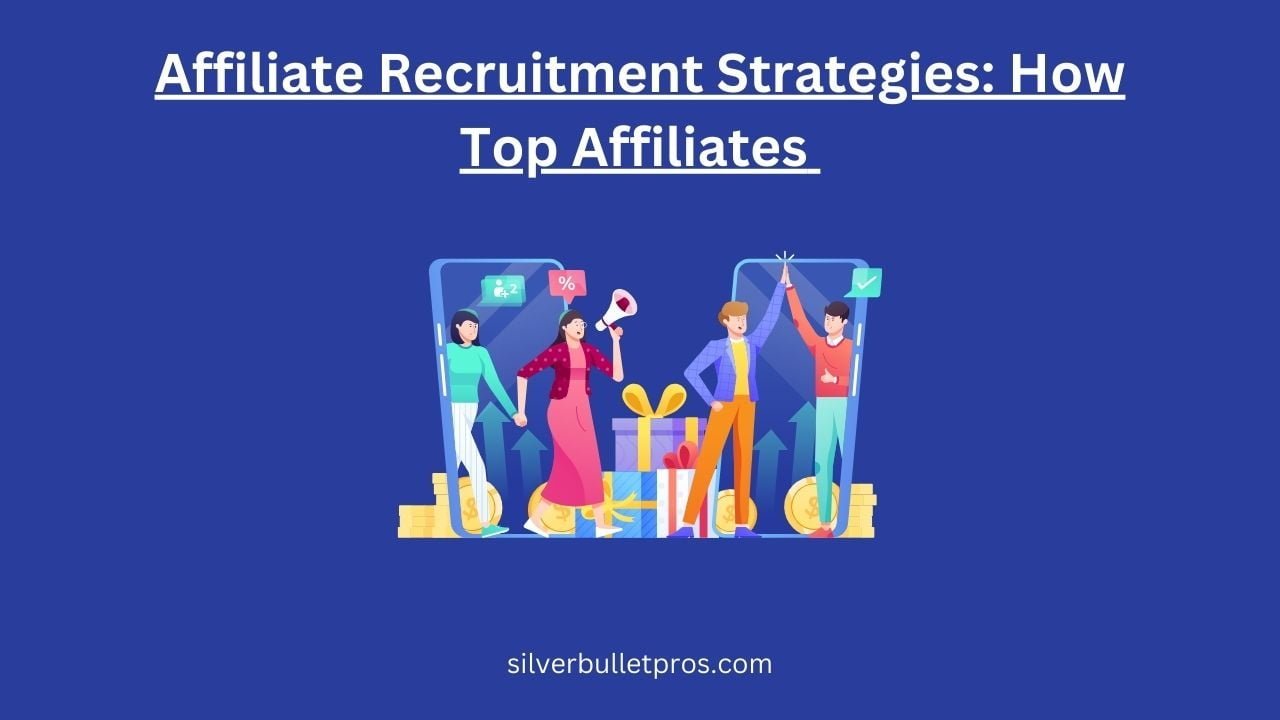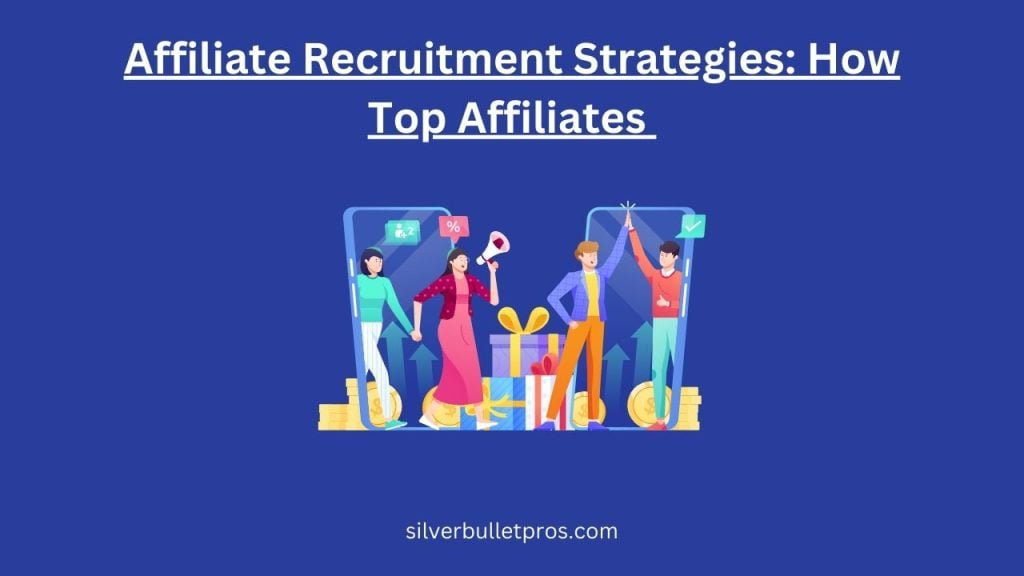

As an affiliate marketer, one of the biggest challenges you face is finding the right affiliates to join your program. Affiliate recruitment is the process of identifying, attracting, and signing up influential affiliates who can effectively promote your products or services to their audience. By implementing effective affiliate recruitment strategies, you can build a network of dedicated affiliates who can generate a steady stream of high-quality traffic and sales for your business.
What is Affiliate Recruitment?
Affiliate recruitment is the process of finding and signing up affiliates to promote your products or services. It involves identifying potential affiliates, reaching out to them, and convincing them to join your affiliate program.
Effective affiliate recruitment requires a deep understanding of your target audience, your products or services, and the types of affiliates that can best promote them. You need to identify affiliates who have a relevant audience and a strong online presence, as well as the ability to create compelling content and drive targeted traffic to your offers.
Why is Affiliate Recruitment Important for Your Business?
Affiliate recruitment is crucial for the success of your affiliate marketing program because it helps you:
- Expand your reach: By partnering with affiliates who have established audiences, you can tap into new markets and reach a wider pool of potential customers.
- Increase sales and revenue: Successful affiliates can drive significant sales and revenue for your business by promoting your products or services to their audiences.
- Build brand awareness: Affiliates can help increase brand awareness and visibility for your business by creating content and promoting your products or services to their followers.
- Leverage influencer marketing: Partnering with influential affiliates can help you leverage the power of influencer marketing and tap into the trust and loyalty that these affiliates have built with their audiences.
- Diversify your marketing efforts: Affiliate marketing can complement your other marketing strategies and help you reach a broader audience through multiple channels.
By recruiting the right affiliates, you can tap into these benefits and build a sustainable and profitable affiliate marketing program for your business.
10 Strategies to Recruit Top Affiliates
- Identify your ideal affiliates: Start by defining your target audience and the types of affiliates that can best reach and influence them. Look for affiliates with relevant websites, blogs, social media accounts, or email lists.
- Offer attractive commissions and incentives: Top affiliates are often motivated by high commissions and attractive incentives. Offer competitive commission rates, bonuses, or exclusive rewards to entice them to join your program.
- Create a compelling affiliate program: Develop a well-structured affiliate program with clear guidelines, easy sign-up processes, and comprehensive resources to support your affiliates' promotional efforts.
- Leverage affiliate networks: Join reputable affiliate networks like ShareASale, CJ Affiliate, or Rakuten to gain access to a pool of potential affiliates and streamline the recruitment process.
- Conduct outreach campaigns: Reach out to potential affiliates directly through email, social media, or at industry events. Personalize your outreach efforts and highlight the benefits of joining your program.
- Offer exclusive opportunities: Provide exclusive opportunities, such as early access to new products, beta testing, or limited-time promotions, to entice top affiliates to join your program.
- Foster community and networking: Create a community for your affiliates to connect, share ideas, and collaborate. Host webinars, live events, or online forums to facilitate networking and knowledge-sharing.
- Implement an affiliate referral program: Encourage your existing affiliates to refer other potential affiliates by offering incentives or commissions for successful referrals.
- Leverage influencer marketing: Identify and partner with influential bloggers, social media personalities, or industry experts who can promote your affiliate program to their engaged followers.
- Optimize your affiliate program: Continuously monitor and optimize your affiliate program based on performance data, affiliate feedback, and industry trends to ensure it remains attractive to top affiliates.
By implementing these strategies, you can effectively recruit top affiliates who can drive significant traffic, sales, and revenue for your business.
How to Create a Successful Affiliate Program
Creating a successful affiliate program requires careful planning and execution. Here are some key steps to follow:
- Define your program structure: Determine the commission rates, payment methods, cookie duration, and other program details that will be attractive to affiliates.
- Develop affiliate resources: Create comprehensive resources, such as marketing materials, banners, tracking links, and training guides, to support your affiliates' promotional efforts.
- Set up tracking and reporting: Implement a robust tracking and reporting system to monitor your affiliates' performance, commissions, and payouts accurately.
- Create affiliate terms and conditions: Clearly define the terms and conditions of your affiliate program, including rules, guidelines, and policies to ensure transparency and compliance.
- Offer affiliate support: Provide dedicated support channels, such as email, chat, or a knowledge base, to assist your affiliates with any questions or issues they may have.
- Promote your affiliate program: Actively promote your affiliate program through various channels, such as your website, social media, industry events, and affiliate networks.
- Continuously optimize and improve: Monitor your affiliate program's performance, gather feedback from affiliates, and make necessary adjustments to improve its effectiveness and appeal.
By following these steps, you can create a well-structured and appealing affiliate program that attracts and retains top affiliates, ultimately driving sales and revenue for your business.
How to Measure the Success of Your Affiliate Program
Measuring the success of your affiliate program is crucial to understanding its effectiveness and identifying areas for improvement. Here are some key metrics to track:
- Affiliate signups: Monitor the number of new affiliates joining your program over time to gauge the effectiveness of your recruitment efforts.
- Active affiliates: Track the number of affiliates who are actively promoting your products or services to understand the engagement level of your affiliate base.
- Affiliate sales and revenue: Closely monitor the sales and revenue generated by your affiliates, both individually and collectively, to evaluate their performance and the overall success of your program.
- Conversion rates: Analyze the conversion rates of traffic and leads generated by your affiliates to identify top-performing affiliates and optimize your program accordingly.
- Commission payouts: Monitor the commission payouts to your affiliates to ensure they are being compensated fairly and in a timely manner.
- Affiliate retention rates: Track the retention rates of your affiliates to identify any issues or areas of improvement that can help you retain top-performing affiliates.
- Return on investment (ROI): Calculate the return on investment (ROI) of your affiliate program by comparing the program's costs (commissions, incentives, management fees) to the revenue generated.
- Customer lifetime value (CLV): Analyze the customer lifetime value (CLV) of customers acquired through your affiliate program to understand the long-term value and profitability of these customers.
By consistently monitoring these metrics and analyzing the data, you can make informed decisions to optimize your affiliate program, improve its performance, and maximize its impact on your business goals.
What are the Different Types of Affiliate Programs?
There are several types of affiliate programs, each with its own structure and approach. Here are some common types:
- Pay-per-sale (PPS): In this model, affiliates earn a commission for each sale they generate for the merchant. This is one of the most common types of affiliate programs.
- Pay-per-lead (PPL): Affiliates are compensated for generating leads, such as email signups or form submissions, rather than direct sales.
- Pay-per-click (PPC): Affiliates earn a commission for each click they generate to the merchant's website, regardless of whether a sale occurs.
- Multi-tier: In a multi-tier affiliate program, affiliates can earn commissions not only for their own sales but also for sales generated by affiliates they recruit (sub-affiliates).
- Private affiliate programs: These programs are exclusive and usually invite-only, where merchants handpick affiliates to join their program.
- Influencer affiliate programs: In this model, merchants partner with influential individuals or content creators to promote their products or services to their engaged followers.
- Subscription-based affiliate programs: These programs involve recurring commissions for affiliates who promote subscription-based products or services.
- Hybrid affiliate programs: These programs combine multiple commission structures, such as pay-per-sale and pay-per-lead, to provide affiliates with various earning opportunities.
The type of affiliate program you choose should align with your business goals, products or services, and the preferences
What are the Different Types of Affiliate Programs?
There are several types of affiliate programs, each with its own structure and approach. Here are some common types:
- Pay-per-sale (PPS): In this model, affiliates earn a commission for each sale they generate for the merchant. This is one of the most common types of affiliate programs.
- Pay-per-lead (PPL): Affiliates are compensated for generating leads, such as email signups or form submissions, rather than direct sales.
- Pay-per-click (PPC): Affiliates earn a commission for each click they generate to the merchant's website, regardless of whether a sale occurs.
- Multi-tier: In a multi-tier affiliate program, affiliates can earn commissions not only for their own sales but also for sales generated by affiliates they recruit (sub-affiliates).
- Private affiliate programs: These programs are exclusive and usually invite-only, where merchants handpick affiliates to join their program.
- Influencer affiliate programs: In this model, merchants partner with influential individuals or content creators to promote their products or services to their engaged followers.
- Subscription-based affiliate programs: These programs involve recurring commissions for affiliates who promote subscription-based products or services.
- Hybrid affiliate programs: These programs combine multiple commission structures, such as pay-per-sale and pay-per-lead, to provide affiliates with various earning opportunities.
The type of affiliate program you choose should align with your business goals, products or services, and the preferences
What methods can I use to recruit top affiliates for my program?
To recruit top affiliates, use direct outreach, join affiliate networks, leverage social media, and attend industry events to connect with potential affiliates.
How do I identify potential top affiliates in my niche?
Identify potential top affiliates by researching popular blogs, social media influencers, and YouTube channels in your niche. Look for those with high engagement and a strong following.
What incentives should I offer to attract high-performing affiliates?
Offer competitive commission rates, exclusive bonuses, early access to new products, and personalized support to attract high-performing affiliates.
How can I build strong relationships with top affiliates?
Build strong relationships by maintaining regular communication, providing valuable resources, offering feedback, and recognizing their efforts through rewards and acknowledgments.
What are common mistakes to avoid when recruiting top affiliates?
Avoid mistakes like neglecting communication, offering low commissions, failing to provide adequate support, and not aligning affiliate goals with your business objectives.